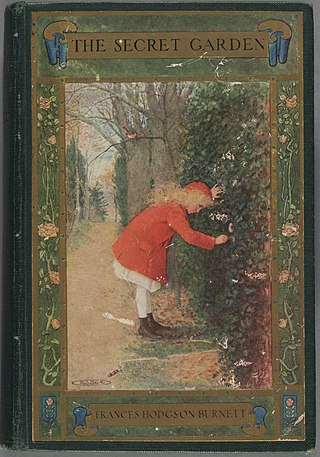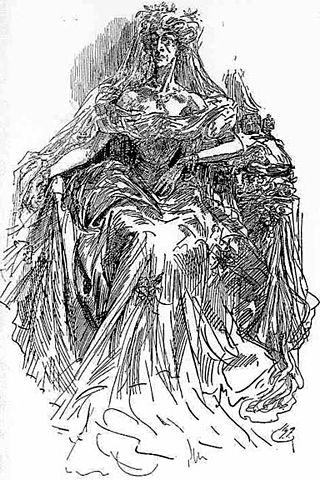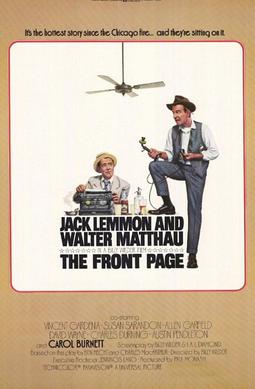
Frances Eliza Hodgson Burnett was a British-American novelist and playwright. She is best known for the three children's novels Little Lord Fauntleroy, A Little Princess (1905), and The Secret Garden (1911).

The Secret Garden is a children’s novel by Frances Hodgson Burnett first published in book form in 1911, after serialisation in The American Magazine. Set in England, it is seen as a classic of English children's literature. The American edition was published by the Frederick A. Stokes Company with illustrations by Maria Louise Kirk and the British edition by Heinemann with illustrations by Charles Heath Robinson.

Miss Havisham is a character in the Charles Dickens' 1861 novel Great Expectations. She is a wealthy spinster, once jilted at the altar, who insists on wearing her wedding dress for the rest of her life. She lives in a ruined mansion with her adopted daughter, Estella. Dickens describes her as looking like "the witch of the place". In the novel, she schemes to have the young orphan, Pip, fall in love with Estella, so that Estella can "break his heart."
Ai Orikasa is a Japanese actress, voice actress and singer.

Frederick Cecil Bartholomew, known for his acting work as Freddie Bartholomew, was an English-American child actor. One of the most famous child actors of all time, he became very popular in 1930s Hollywood films. His most famous starring roles are in Captains Courageous (1937) and Little Lord Fauntleroy (1936).

Patricia Amy Rowlands was an English actress who is best remembered for her roles in the Carry On films series, as Betty Lewis in the ITV Thames sitcom Bless This House, and as Alice Meredith in the Yorkshire Television sitcom Hallelujah!.

Ernest Frederic Graham Thesiger, CBE was an English stage and film actor. He is noted for his performance as Doctor Septimus Pretorius in James Whale's film Bride of Frankenstein (1935).

Cedric is a given name invented by Walter Scott in the 1819 novel Ivanhoe.
Little Lord Fauntleroy, also known as Little Prince Cedie, is a Japanese anime series produced by Nippon Animation in 1988 and was broadcast on the World Masterpiece Theater.

Henry Stephenson was a British actor. He portrayed friendly and wise gentlemen in many films of the 1930s and 1940s. Among his roles were Sir Joseph Banks in Mutiny on the Bounty (1935) and Mr. Brownlow in Oliver Twist (1948).

The Front Page is a 1974 American black comedy-drama film directed by Billy Wilder, and starring Jack Lemmon and Walter Matthau. The screenplay by Wilder and I. A. L. Diamond is based on Ben Hecht and Charles MacArthur's 1928 play of the same name.

Little Mexican and Other Stories is the third collection of short fiction written by Aldous Huxley, published in 1924. The book consists of four short stories, a novelette and a novella.

West of the Divide is a 1934 American Western film directed by Robert N. Bradbury for Monogram, and starring John Wayne, Yakima Canutt and Gabby Hayes. The film had a copyright notice upon release, but it was not renewed.

Little Lord Fauntleroy is a 1936 American drama film based on the 1886 novel of the same name by Frances Hodgson Burnett. The film stars Freddie Bartholomew, Dolores Costello, and C. Aubrey Smith. The first film produced by David O. Selznick's Selznick International Pictures, it was the studio's most profitable film until Gone with the Wind. The film is directed by John Cromwell.

Little Lord Fauntleroy is a 1921 American silent drama film directed by Alfred E. Green and Jack Pickford and starring the latter's elder sister Mary Pickford as both Cedric Errol and Widow Errol. The film is based on the 1886 novel of the same name by Frances Hodgson Burnett. A statue depicting Pickford's role exists today on the facade of New York City's landmarked I. Miller Building.

Little Lord Fauntleroy is a 1980 British family drama television film directed by Jack Gold and adapted by Blanche Hanalis from Frances Hodgson Burnett's 1886 children's novel of the same name. The film stars Alec Guinness, Rick Schroder, Eric Porter, Connie Booth, and Colin Blakely.
Cedie, also known as Cedie: Ang Munting Prinsipe, is a 1996 Filipino family film loosely based on the popular anime Little Lord Fauntleroy which was in turn based on the 1886 children's novel of the same name by English playwright and author Frances Hodgson Burnett. The film was directed by Romy V. Suzara who also directed the film adaptation of Princess Sarah. The film starred Tom Taus Jr. as Cedric Erol.
Michael Hobbs is an English actor, film-maker, and academic.
Alberto Negrin is an Italian film director and screenwriter, known for his historical, nostalgic and political films.

Little Lord Fauntleroy is a 1914 British silent drama film directed by Floyd Martin Thornton and starring H. Agar Lyons, Gerald Royston in the title role, and Jane Wells. It was based on the 1886 novel Little Lord Fauntleroy by Frances Hodgson Burnett. The film was produced by the Natural Color Kinematograph Company. It was distributed in the UK by Kineto Ltd. and released in the US by Shubert Feature Film in April of that year. It was one of the first feature-length films to be made in colour, using the Kinemacolor two-colour additive colour process.




















